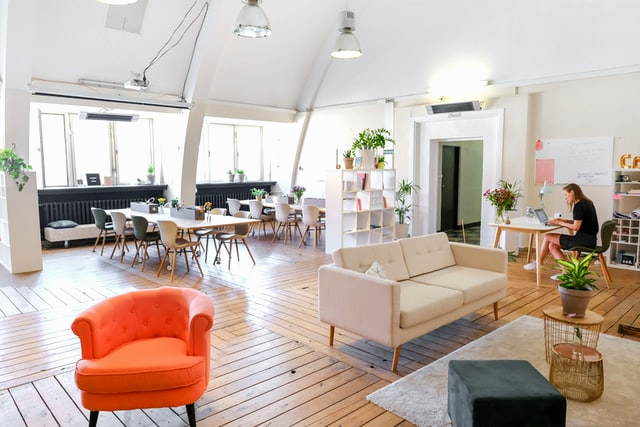While office or home working suit some staff, others are embracing the new Work Near Home (WNH) model, which is a clever hybrid combining the best of office and home working.
The Problems with Offices
In the UK, the average commute costs £800 per year and if you work in London this could be more than £5,000 – with nearly 24 unpaid workdays spent travelling each year. Across the UK, commuting accounts for 18 billion kg of CO2e – 25% of transport’s greenhouse gas emissions and 5% of the country’s total. There is also a cost to our wellbeing with commuting time harming our job satisfaction, leisure time, and mental health (especially with stressful traffic).
Working From Home (WFH) is Failing for Many
While many initially embraced working from home at the start of the first lockdown, freed from commuting, face-time and formal clothing, it proved to have its own flaws for many. The National Bureau of Economic Research found that the average working day increased by 48.5 minutes during lockdown – the equivalent of two whole extra working days a month. By removing the commute, a natural excuse to move and exercise is also eliminated which can lead to increased chances of developing depression.

Few homes are set up for working with ergonomic seating, desks and IT. Space can be limited, reducing productivity. Children in lockdown or on holidays are a distraction. Immersive learning-by-doing is curtailed. And working from home can also be lonely, poorly suited for extraverts who gain energy from working with others or need social interaction to support motivation and focus.
Work Near Home (WNH)
A new breed of coworking spaces located near to home combine many of the benefits of office and home working – and alleviate many of the shortcomings. Work Near Home spaces combine high quality office space and facilities with a professional social atmosphere in a regional setting with communal amenities including good coffee and fast broadband.
Working within a shared working space has its own unique advantages; being alone but together creates its own community, an opportunity to meet new people, and build new connections to support business and social interactions.
Work Near Home coworking spaces also rejuvenate regional and suburban areas, facilitating spending and investment in the local community as buildings and town centres are repurposed and reinvigorated in a virtuous cycle; as businesses grow and spin out into their own adjacent spaces they increase their local spending on local cafes, printers and other business services.
With more local, easily accessible work locations, travel times are reduced, and low carbon transport alternatives become feasible – walking or cycling to your place of work becomes an easy option as journey distances are cut, but still create vital separation between where people work and live. With everyday longer journeys reduced, pressure is relieved on national road and rail routes, as journeys are limited to only when face-to-face meetings are required.
Work Near Home does not supplant the city office which remains the place for staff to meet, host clients and suppliers, connect with the company’s mission and immersively learn from colleagues. However, COVID has shown us that these benefits can be achieved without having to be in the city office every day.
Look for a Work Near Home space near you. TownSq, for example, collaborates with local municipalities to regenerate buildings and create wonderful workspaces.
Combining Working Models
We suggest that organizations who adopt a hybrid model enabling staff to work where best suit them are more likely to win the war for talent.
Rype Office is a high quality office furniture remanufacturer and producer of sustainable office furniture. Contact 0333 3358 3330 or email contact@rypeoffice.com

